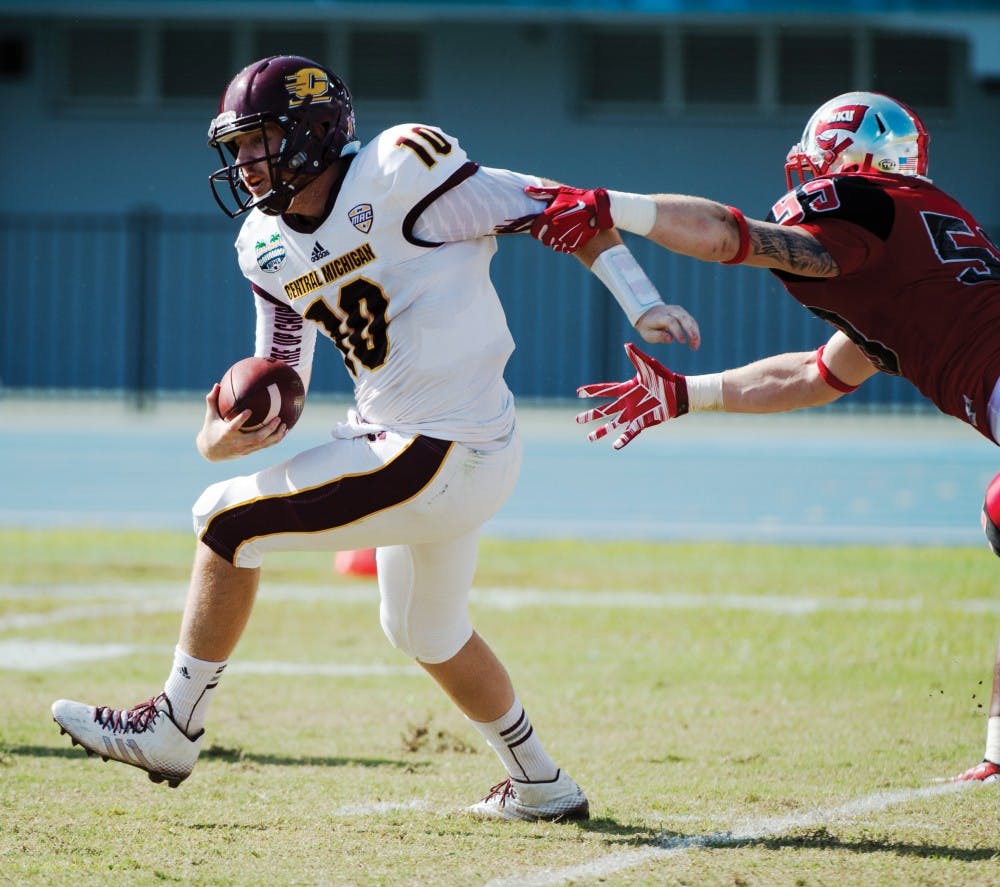CMU spends $145,474 to play in Popeyes Bahamas Bowl

Institutional bowl game expenses for the 2014 Popeyes Bahamas Bowl were submitted to the NCAA April 1.
Expenses for transportation, meals, lodging and other costs totaled $595,474. Central Michigan University paid 25 percent of the expenses, $145,474, while the Mid-American Conference provided a $450,000 stipend that covered flight costs and meals for 239 players, staff members and cheerleaders.
Ken Mather, associate commissioner for media and public relations for the Mid-American Conference, said bowl distribution payments are arranged with the specific bowl years in advance. Payments are not dependent on which team participates.
The $450,000 covered 75 percent of bowl expenses for CMU. Mather said the MAC does not disclose how this distribution amount is determined.
Transportation expenses totaled $371,542, and $116,310 was spent on meals for the four-day trip. Rooms at Atlantis Paradise Island were provided free to CMU and opponent Western Kentucky, while passports for all players were paid for by CMU over the summer in the possibility of receiving the bid.
Additionally, $79,165 was spent on equipment and supplies, which included bowl game apparel, transporting equipment and new sideline headsets, which had to be replaced due to signal issues.
The remaining $19,117 went to administrative costs, outside services and professional fees.
Senior Associate Athletic Director of Internal Operations Brad Wachler said because a bowl game appearance is not guaranteed, the Athletics Department does not budget for it. Instead, costs are covered from the university's operating budget.
Vice President of Finances and Administrative Services Barrie Wilkes said Bowl game expenses are paid for by surplus funds in the operating budget.
"We don't have a bowl game fund because the cost is variable and we don't know if and where we are going to go," Wilkes said. "At the end of the year we take (bowl game expenses) out of year-end funds when we are balancing out the books. If athletics had a surplus I would argue that they should cover it but generally athletics historically doesn't have the money to cover it."
Wachler said MAC allocation is vital to being able to afford expenses that come with post-season play. He said the conference has made an effort to provide universities more resources to travel.
"This is pretty common across the country. Every bowl game has some kind of allocation provided to the teams," Wachler said. "When you look at the bowl game in general, especially going to the Bahamas the day before Christmas, I think we made out pretty good in what our overall net expense was."
Overall, Wachler said CMU benefitted from the exposure it received despite the loss, especially because of the dramatic final play, in which the senior wide receiver Titus Davis scored on an improbable Hail Mary touchdown pass that punctuated a fourth quarter comeback. The Chippewas missed a two-point conversion and lost to Western Kentucky 49-48.
"That is the value and power of athletics, to get that national attention and national exposure," Wachler said. "We were the game to watch on ESPN. We were lucky to with the way the game played out."






